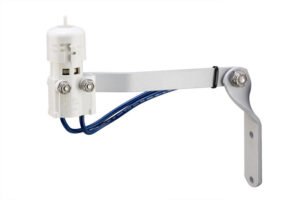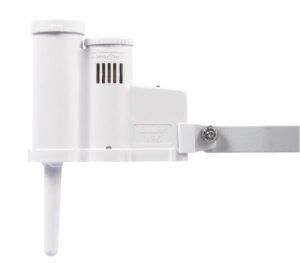Welcome To Our Irrigation Library!
Rain sensor


In modern cars the rain sensor turns the wipers on when the rain starts. In irrigation systems it works opposite, when the rain starts, the system stops.
It’s a basic help in water saving hence we always recommend to install it. Even when a smart controller (with nearby airport weather station connection) is installed, it’s always a good idea to have a local sensor.
However their working is a bit different than the car sensors, as they collects the rain for a while, before the system gets shut off. So it’s possible, although there is a rain sensor installed on your irrigation system it will still starts in rain.
Rain sensors are adjustable considering both the soil conditions and rainfall frequency / strength. Hence there is no universal settings for these sensors. Initially it worths to keep an eye on the system operation and adjust the sensor to the actual conditions.
When the rain sensor is filled with the pre-set water amount, it will cut the program circuit of controller whilst getting dry. It takes different time depending on the settings. Generally speaking the higher rainfall amount set for shut off the longer dry-out time for turn back on.
Wired sensors are connected to the controllers directly. Sometimes it’s not a good idea, because bushes and trees can overgrow them and prevent them from operation. If there is no good location for a wired sensor, it’s still possible to install a wireless one somewhere within 2-300 m from the controller. In this case, a receiver is installed nearby the controller and the sensor unit can be anywhere (even on the roof of a skyscraper) within this distance.
Rain sensors works automatically, based on their settings without human intervention.
Maintenance
Working of rain sensor are based on their availability by the rain. Most important to do is cutting off any branches above them to make sure any rain will hit them. Also important to make sure, the sensor is positioned on the right way for working properly.
Most of the sensors have a test spindle on their sensor body. Pressing the spindle makes the same result then a rainfall, so the system will go off. It is shown on the screen of controller. It’s a good way to test the sensor prior to every season.
Sometimes animals make nests in the sensor body or any dirt gets in them and prevent the sensor from working well. Good idea to check this prior to every season.
Wireless sensor units have a kind of power source, mostly batteries. They can be replaceable or not. In latter case the whole sensor unit must be replaced by the end of their lifecycle (usually 10 years).
